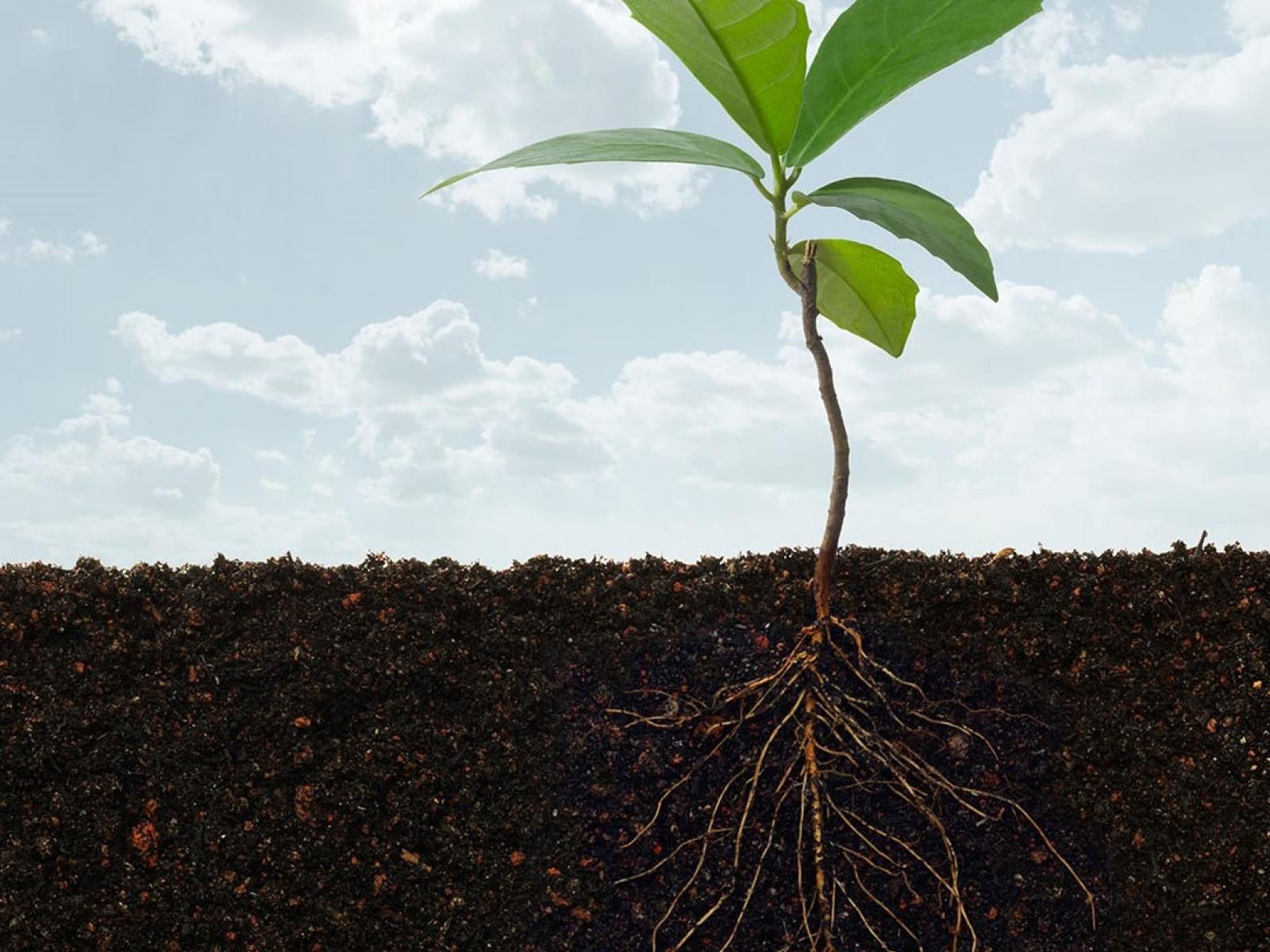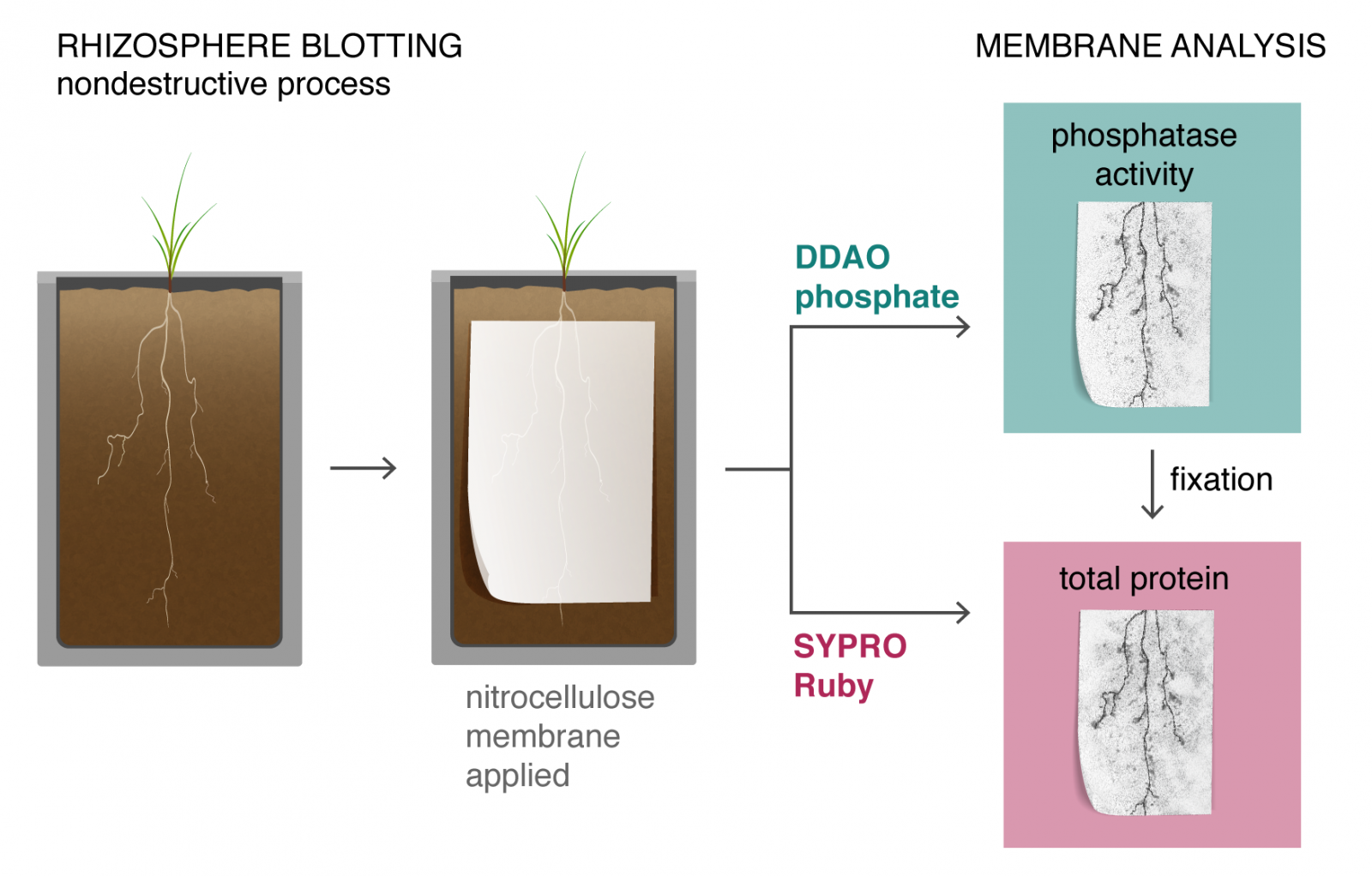Digging into the Details of Phosphorus Availability
New root blotting technique visualizes relationship between root growth, microbial activity, and soil nutrients.

Courtesy of Shutterstock
The Science
Phosphorous is an important nutrient for plants. However, the mechanisms used by plants to extract phosphorus from soil and incorporate it into their biomass are not well understood. Now, researchers developed a new technique to visualize the activity and distribution of enzymes that mobilize phosphate around plant roots. Tracking the location of these enzymes can help researchers better understand the chemical dynamics between roots, microbes, and soil that influence how plants get nutrients. The approach could also be applied to other nutrient-cycling enzymes.

The Impact
Phosphorus is an essential nutrient for plants and therefore, global demand for phosphorus fertilizers is expected to grow to accommodate the world’s growing population. However, most of these fertilizers are made from rock phosphorus, a non-renewable resource. This research provides new insights into the complex dynamics of phosphorous exchange between soil, microbes, and plant roots. Knowledge from this newly developed approach will help scientists identify strategies to improve phosphorus use efficiency for bioenergy crop production in marginal environments, as well as for agriculture in general.
Summary
Soil bacteria, fungi, and plants produce enzymes called phosphatases, which convert organic sources of phosphorus into a form that plants can absorb. Researchers have studied the microbial activity in bulk soil samples, providing information about the overall functional potential of the environment. But to better understand the dynamics between soil, plants, and microbes, more detail is needed. To accomplish that, a team of researchers developed a new technique based on root blotting to reveal phosphatase activity and distribution around plant roots. They grew switchgrass in flat pots or “rhizoboxes” containing soil with pellets of root matter as sources of organic phosphorus. Then, they applied a nitrocellulose membrane to capture proteins around the roots. Finally, the researchers stained the membrane with fluorescent indicators for phosphatase activity and protein concentration. This revealed the spatial distribution of phosphatase around the roots of plants, and highlighted regions of increased phosphatase activity.
This approach could be used to study phosphatase activity over time, as well as other nutrient-cycling enzymes. The combination of membrane extraction, with rapid analysis via fluorescent probes to reveal localization of phosphatase activity in the rhizosphere, offers a new technique for environmental applications. Expanding this approach could enable simultaneous visualization of multiple enzyme types in soil systems.
Funding
Development of this method was funded by DOE’s Office of Science, Biological and Environmental Research Program by the Early Career Research Award program (PI: Jim Moran).
Contact
Published: July 7, 2020
V.S. Lin, et al. “Non-destructive spatial analysis of phosphatase activity and total protein distribution in the rhizosphere using a root blotting method.” Soil Biology and Biochemistry, 146 (2020). DOI: 10.1016/j.soilbio.2020.107820